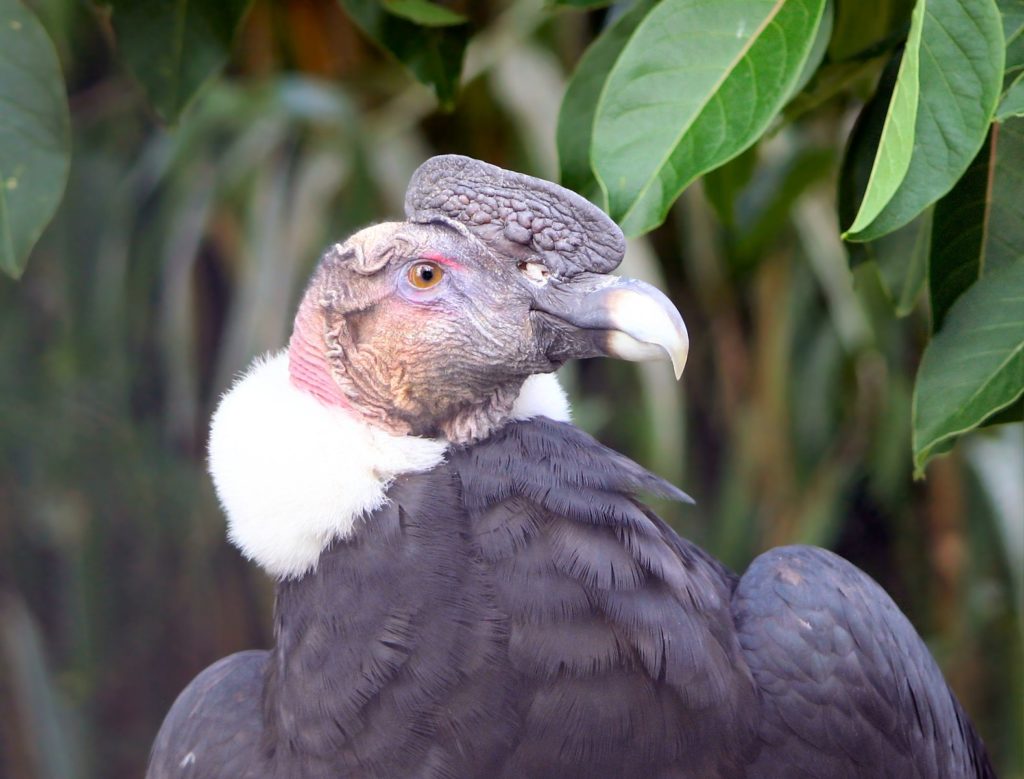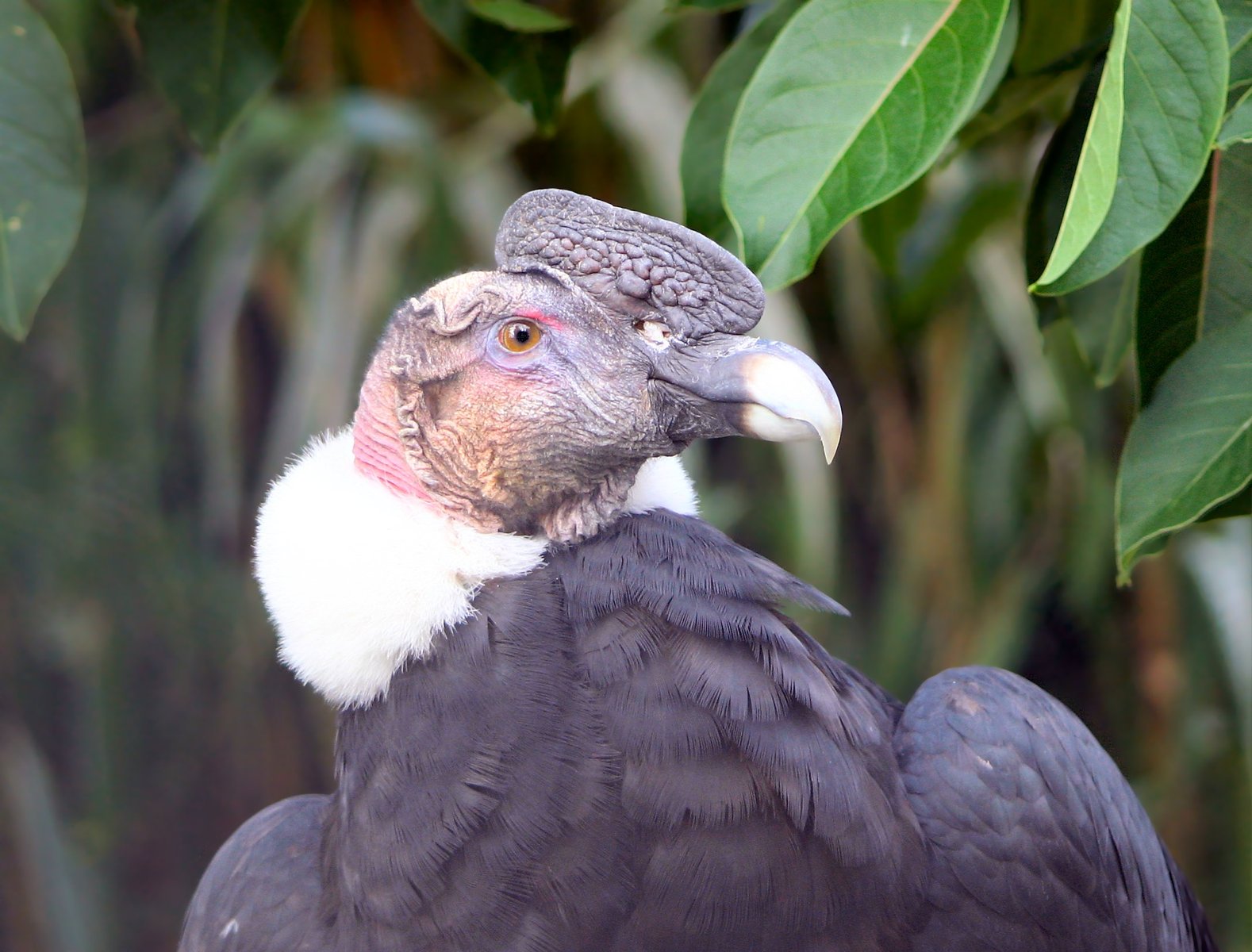ANIMAL: Andean Condor Vultur gryphus Type of Animal: New World Vulture Habitat: Mountains, alpine areas, grassland, coastal mountain habitat, desert, coastlines Location(s): Andes Mountains from Colombia through Argentina down to Tierra del Fuego & very southern part of S. America, small pockets of Colombia/Venezuela border Appearance: Black w/ white feathers at neck base & white patches on wings, male larger than female (unusual for birds of prey) w/ neck wattle & large comb on head, both sexes have featherless neck/head, juveniles have grayish-brown coloration, blackish head/neck skin & brown ruff, male has dark brown irises, female has red irises, sharp curved beak on both sexes Food/Diet: Carrion, refuse, eggs, small birds, rodents, rabbits Status in Wild: Threatened Conservation: Breeding in zoos & breeding centers. Reintroductions from zoos & breeding centers into wild. Lifestyle: Monogamous pairs, juveniles found in small flocks & adults form temporary flocks of up to 20 birds at large carcasses alongside juveniles w/ males being dominant. These flocks more prevalent outside breeding season. Only close social bonds between mated pairs, which are life-long. Survivor will take new mate. Additional Info: Called: Male-Cock Female-Hen Young-Chick Group-Flock/Condo Weight: Male-24-33 lbs Female-18-24 lbs Young-3 lbs Gestation: 1.5-2 months Life Span: 55 years in wild, up to 70 years in captivity Height: Male-4 ft Female-3.5 ft Body Length: Male-4 ft Female-3.5 ft Tail Length: 1 ft Adults have no predators, raptors & foxes prey on young One of the largest wingspans of any bird: males have wingspan of 10.5-11 ft, females around 10 ft. Chick stays w/ parents for up to 2 years & becomes sexually mature at 5-7 years. Threatened due to slow reproductive rate (they breed every other year & generally lay 1 eggs, will lay another if previous egg lost), hunting for sport, hunting for bones/organs to be used in medicinal purposes, persecution as perceived killers of young livestock, pesticide poisoning whether direct or indirect (many poisons were meant for mammalian predators & crop pests), collisions w/ power lines, & habitat loss. Eggs laid on cliff ledges. Fun Fact(s): National symbol of Argentina, Bolivia, Colombia, Ecuador, Peru, & Chile. Plays important role in folklore/mythology of many Andean cultures. Associated w/ sun deity believed to rule upper world in many of these cultures & was symbol of power/wealth. Has been represented in Andean art since approximately 2500 BCE.

